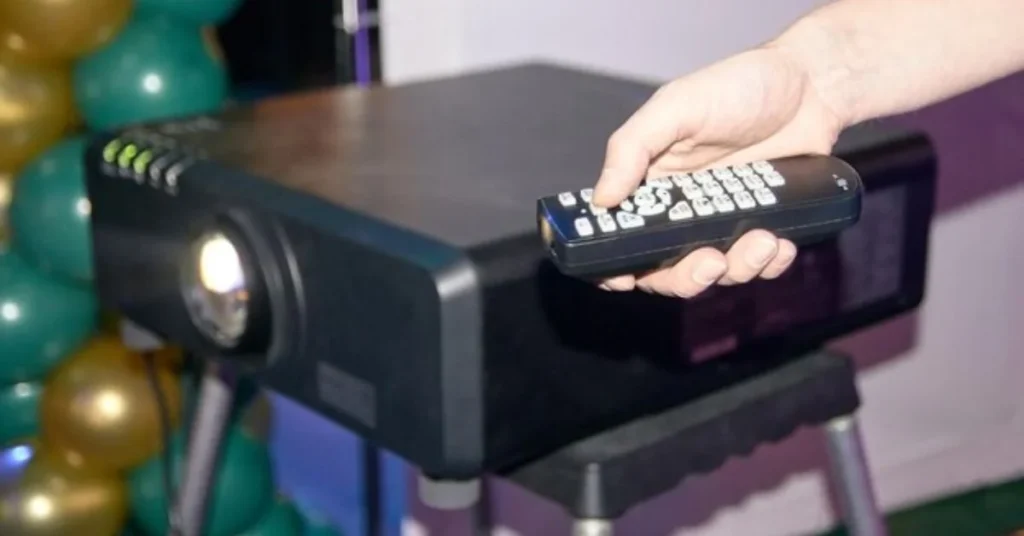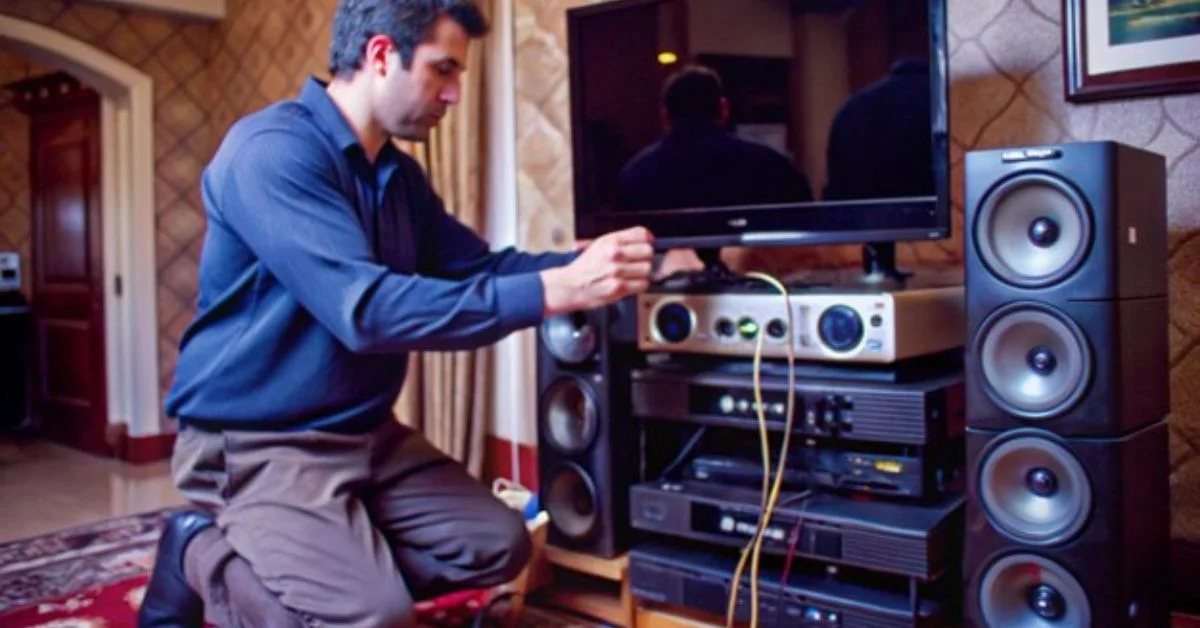In the realm of home entertainment, few things can rival the immersive experience of a well-equipped home theater. As technology evolves, so do our expectations of audio-visual experiences. Whether you’re watching the latest blockbuster or enjoying your favorite music, the quality of sound and image plays a pivotal role in how you perceive entertainment. However, amidst this pursuit of perfect audiovisual experiences, the importance of safeguarding your equipment often goes unnoticed. This is where a home theatre power manager comes into play, ensuring your investment remains protected from various electrical anomalies.
Understanding Home Theatre Power Managers
What is a Home Theatre Power Manager?
A home theatre power manager is an electronic device specifically designed to protect your valuable audio, video, and home theater equipment from electrical issues. This equipment can be susceptible to dirty electricity, voltage fluctuations, power outages, and even lightning strikes. By filtering electrical surges and spikes and converting “dirty” power into clean, steady electricity, a power manager serves as a crucial line of defense against electrical disturbances that can damage your devices.
The Necessity of a Power Manager
As we indulge in high-definition content and surround sound systems, the quality of power supplied to these devices becomes increasingly vital. Poor electrical supply can lead to equipment malfunctions, degraded performance, and ultimately, costly repairs or replacements. In contrast, a home theatre power manager ensures your systems operate smoothly, prolonging their lifespan and enhancing your viewing and listening experiences.
Key Features of Home Theatre Power Managers
- Surge Protection: One of the primary functions of a home theatre power manager is to protect against power surges and spikes. These sudden increases in voltage can cause significant damage to your equipment. A power manager filters out these fluctuations, safeguarding your devices.
- Voltage Regulation: Home theatre power managers stabilize the voltage supplied to your devices. This regulation ensures that your equipment receives a consistent voltage level, which is essential for optimal performance and longevity.
- EMI/RFI Filtering: Electromagnetic interference (EMI) and radio frequency interference (RFI) can disrupt the performance of audio and video equipment. A power manager filters out these interferences, delivering cleaner power to your devices, resulting in improved audio and video quality.
- Energy Conservation: Many modern home theatre power managers come equipped with energy-saving features. These devices can automatically turn off components that are not in use, reducing unnecessary power consumption and lowering electricity bills.
- Power Monitoring and Control: Advanced home theatre power managers allow users to monitor and control the power usage of different components within the system. This feature provides insights into energy consumption and helps in optimizing performance.
- Scheduling: The ability to schedule when components turn on or off adds convenience and ensures that your devices are only powered when needed. This feature can help prevent wear and tear on your equipment.
- Multiple Outlets: Typically, home theatre power managers resemble DVD or Blu-ray players in size and shape, but they come equipped with multiple outlets. These outlets allow you to connect various devices, providing centralized protection for your entire system.
Benefits of Using a Home Theatre Power Manager
Investing in a quality home theatre power manager not only protects your equipment but also enhances your overall home entertainment experience. Here are some of the key benefits:
1. Equipment Longevity
By protecting your devices from electrical anomalies, a power manager significantly extends the lifespan of your audio and video equipment. This is particularly crucial for high-end systems that can be expensive to repair or replace.
2. Enhanced Performance
With clean and stable power, your home theater system can operate at its peak performance. This means clearer audio, sharper images, and a more enjoyable viewing experience overall.
3. Cost Savings
The initial investment in a home theatre power manager can save you money in the long run. By preventing damage to your equipment, you can avoid costly repairs or replacements. Additionally, energy-saving features help reduce your monthly electricity bills.
4. Peace of Mind
Knowing that your equipment is protected from power surges and fluctuations provides peace of mind. You can enjoy your favorite movies and music without worrying about potential damage to your devices.
5. Simplified Setup
With multiple outlets and integrated surge protection, a power manager simplifies the setup of your home theater system. You can connect all your devices in one place, making organization and maintenance easier.

Choosing the Best Home Theatre Power Manager
When it comes to selecting the best home theatre power manager for your needs, consider the following factors:
1. Surge Protection Rating
Look for a power manager with a high surge protection rating, typically measured in joules. A higher rating indicates better protection against power surges.
2. Number of Outlets
Ensure that the power manager has enough outlets for all your devices. Consider future expansions when making your choice.
3. EMI/RFI Filtering
Choose a power manager with effective EMI and RFI filtering capabilities. This feature is essential for ensuring high-quality audio and video performance.
4. Energy-Saving Features
Select a power manager with automatic shut-off and scheduling features to help reduce energy consumption and save on your electricity bills.
5. Brand Reputation
Research reputable brands known for producing reliable power managers. Brands like Panamax have established themselves as leaders in power conditioning and management for home theater systems.
Popular Home Theatre Power Managers
Panamax Power Conditioner
One of the most recognized names in the industry, Panamax offers a range of power conditioning solutions designed specifically for home theater systems. Their power managers are renowned for their superior surge protection, voltage regulation, and EMI filtering capabilities. Many models come equipped with features like automatic shut-off, power monitoring, and scheduling options, making them a popular choice among audiophiles and home theater enthusiasts.
Panamax Home Theater Power Management Solutions
Panamax home theater power management solutions not only protect your equipment but also enhance overall performance. These devices are designed to accommodate various setups, providing multiple outlets and advanced filtering technologies to ensure clean, steady power. Users praise the ease of use and the peace of mind that comes with knowing their investment is well-protected.
Installation and Maintenance of Home Theatre Power Managers
Installation
Installing a home theatre power manager is typically a straightforward process. Follow these steps for a successful setup:
- Choose a Suitable Location: Find a spot near your home theater system where you can easily access the power manager.
- Plug in the Power Manager: Connect the power manager to a wall outlet. Ensure that the outlet is grounded and capable of handling the total load of your devices.
- Connect Your Equipment: Plug all your audio, video, and other devices into the outlets on the power manager. Make sure to adhere to the power ratings and avoid overloading any single outlet.
- Configure Settings: If your power manager has scheduling or monitoring features, take a moment to set them according to your preferences.
Maintenance
Maintaining your home theatre power manager is essential for optimal performance. Here are some tips:
- Regularly Inspect Cables and Connections: Check for any frayed or damaged cables, and ensure all connections are secure.
- Keep the Device Clean: Dust and dirt can accumulate on your power manager. Wipe it down with a dry cloth regularly to prevent buildup.
- Monitor Performance: If your power manager has monitoring capabilities, keep an eye on the performance metrics to identify any potential issues early.
- Replace When Necessary: Power managers have a limited lifespan, particularly their surge protection components. If you notice any signs of wear or if it has been subjected to a significant surge, consider replacing the unit.
Conclusion
In a world where home entertainment systems continue to advance, the importance of protecting your equipment cannot be overstated. A home theatre power manager is an essential investment that safeguards your audio and video components against electrical anomalies while enhancing performance and energy efficiency. By understanding the features, benefits, and maintenance of these devices, you can make an informed choice to elevate your home entertainment experience.
Whether you opt for a leading brand like Panamax or explore other options, ensure that your home theatre power manager meets your specific needs. With the right device in place, you can enjoy your favorite movies, shows, and music with confidence, knowing your valuable equipment is well-protected.
FAQs
1. What is a home theatre power manager?
A home theatre power manager is an electronic device designed to protect audio and video equipment from electrical disturbances such as surges, spikes, and voltage fluctuations.
2. How does a power manager improve audio and video performance?
By filtering out electromagnetic and radio frequency interference and providing clean, stable power, a power manager enhances the overall performance of audio and video equipment.
3. Do I need a home theatre power manager for my equipment?
If you have high-end audio and video equipment, investing in a power manager is advisable to protect against potential damage from electrical anomalies.
4. Can a home theatre power manager save on electricity bills?
Yes, many power managers include energy-saving features that help reduce power consumption by turning off unused components, thereby lowering electricity costs.
5. How do I choose the best home theatre power manager?
Look for features such as surge protection ratings, number of outlets, EMI/RFI filtering capabilities, and brand reputation. Brands like Panamax are well-regarded in this field.
6. How do I maintain my home theatre power manager?
Regularly inspect cables and connections, keep the device clean, monitor performance metrics, and replace it when necessary, especially after a significant power surge.









